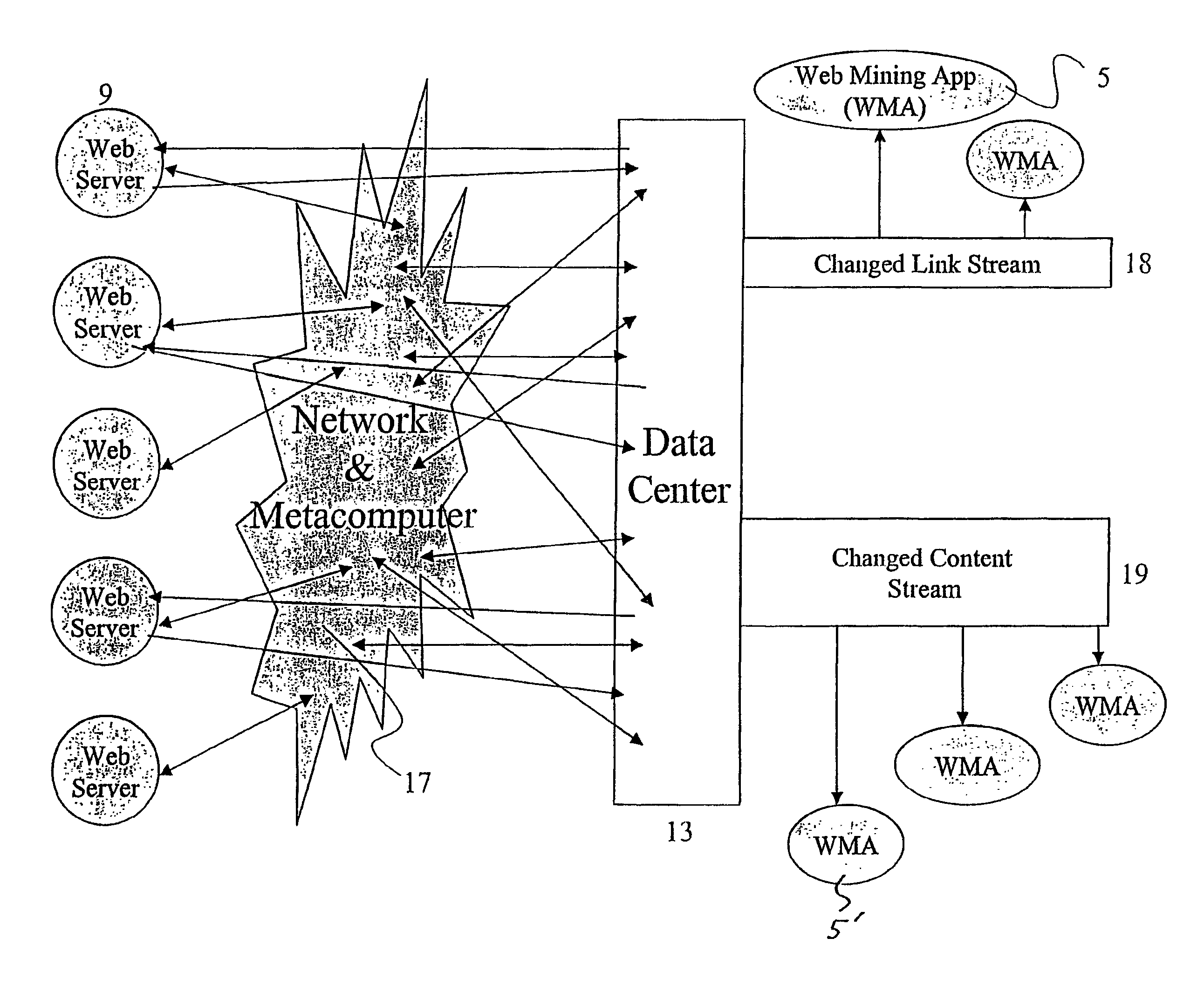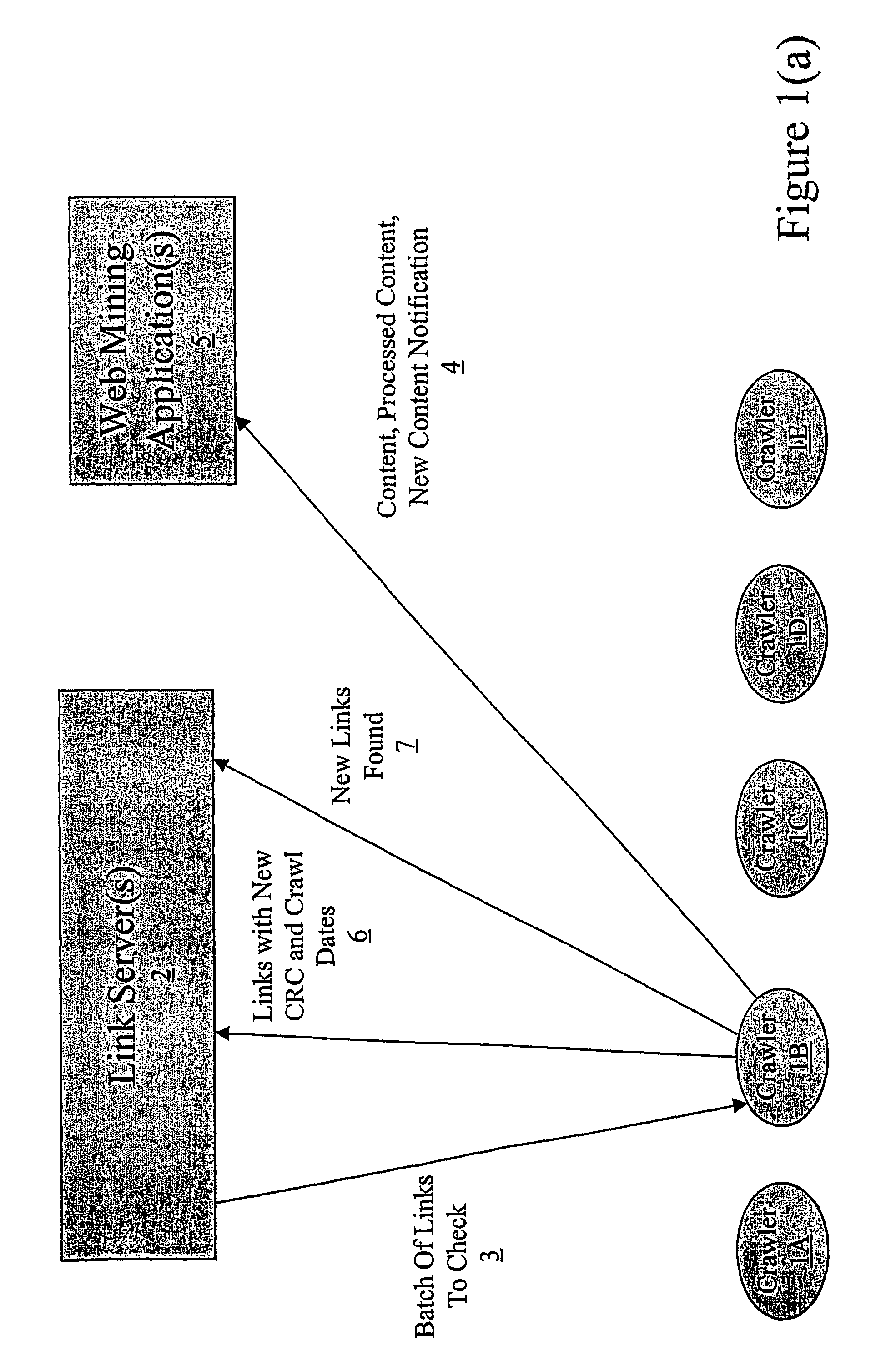High refresh-rate retrieval of freshly published content using distributed crawling
- Summary
- Abstract
- Description
- Claims
- Application Information
AI Technical Summary
Benefits of technology
Problems solved by technology
Method used
Image
Examples
Embodiment Construction
[0053]In a first preferred embodiment, the invention uses a distributed system of crawlers to efficiently gather new and changed published information on a network. In a most preferred embodiment, the distributed system is a metacomputer system. Examples of a suitable metacomputer include the Share Metacomputer developed by Green et al. at the Johns Hopkins University, and the systems of PopularPower.com, processtree.com, DistributedScience.net, Entropia.com, AppliedMeta.com, UnitedDevices, DataSynapse, and the like.
[0054]A metacomputer operating system suitable for use in the present invention is made up of many participating computers on the network (such as the Internet). The metacomputer consists of the Contributor Environments (CE) and the Allocation Servers (AS). The CE is a software application that is installed on a contributor's computer, which can be any modem computer with a network connection. The CE runs as a low priority background process, to minimize the impact on pe...
PUM
 Login to View More
Login to View More Abstract
Description
Claims
Application Information
 Login to View More
Login to View More - R&D
- Intellectual Property
- Life Sciences
- Materials
- Tech Scout
- Unparalleled Data Quality
- Higher Quality Content
- 60% Fewer Hallucinations
Browse by: Latest US Patents, China's latest patents, Technical Efficacy Thesaurus, Application Domain, Technology Topic, Popular Technical Reports.
© 2025 PatSnap. All rights reserved.Legal|Privacy policy|Modern Slavery Act Transparency Statement|Sitemap|About US| Contact US: help@patsnap.com



